A question – do you have le goût anglais or le goût francais? This ‘English taste’ or ‘French taste’ refers, as far as I know, to Champagne but I guess it could include any beverage or food that is preferred young or mature. But let’s stick to Champagne, and our own Méthode Cap Classique.
The sayings refer to the English taste for aged vintage Champagne and the French taste for much younger, fresher wines – well, that’s how I understand it.
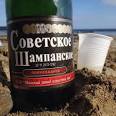
Checking on the internet, I found le goût anglais initially referred to sweetness rather than age, as it does, in ascending degrees, for American, French and Russian tastes. Anyone who has tried Russian Champanski will appreciate the truth of that level of dosage! But all would taste sweet to today’s palates.
Goût anglais (“English taste”, between 22 and 66 grams); note that today goût anglais refers to aged vintage champagne
Goût américain (“American taste”, between 110 and 165 grams)
Goût français (“French taste”, between 165 and 200 grams)
Goût russe (“Russian taste”, between 200 and 300 grams)
Over the years my taste has changed. I used to think more mature MCC’s more interesting, though this was often achieved via bottle age rather than autolysis, the reason for that being the wine had spent longer on the cork rather than on the lees. The younger Non Vintage wines then were too raw, too simple after too short a time on the lees (the minimum time as prescribed by the MCC Producers’ Association is 12 months) and the cork. That’s also been due to their popularity, with the big players like Graham Beck, Villiera and Simonsig having to release these NVs sooner than they’d have liked. It’s only as one moves onto the vintage and the prestige cuvées that producers are able to give the benefit of longer lees ageing.
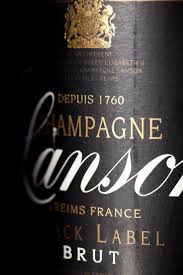 So what I’m looking for today is freshness with elegant, subtle autolysis, a definition confirmed when I recently tasted Lanson Black Label Brut NV, just one of a range of wines from this Champagne House re-introduced to South Africa under the wing of Great Domaines.
So what I’m looking for today is freshness with elegant, subtle autolysis, a definition confirmed when I recently tasted Lanson Black Label Brut NV, just one of a range of wines from this Champagne House re-introduced to South Africa under the wing of Great Domaines.
If proof were needed about the alchemy of time, the three and a half years this and the Lanson Rosé NV spend on the lees clearly offers it. A small addition of reserve wine, the oldest portion 10 years old, increases complexity, but freshness is maintained. Even the Noble Cuvée 2000 degorged in 2012 maintains purity and freshness as well as gentle toasty, brioche features. In fact, purity and freshness sums up the whole Lanson range.
Not too long after this tasting, local MCC specialist, Le Lude launched their first wines. I wrote about them here, after my visit back in May. Under the dedicated enthusiasm of winemaker, Paul Gerber and owners Nic and Ferda Barrow, Le Lude is set to become a major player in the quality bubbly market.
Like Lanson, their two first releases, a Brut NV (R190) and Rosé NV (R195), spent three and a half years on the lees though neither received reserve wine, a component that will be added in future. We tasted the 2012 reserve, aged for two years in barrel, then kept in magnums. If it would be unrealistic to imagine these maiden bottlings to have complexity similar to the Lanson range, they do, however capture both the elegance and freshness plus a bubble that’s both bright and creamy – a lovely combination. Gerber explains that bubble texture gains from longer maturation.
Alongside the reserve wine, the morning’s tasting started with 2015 base wines of Rosé and what, in five years’ time, will be released as Prestige. The former with colour and fruit from some red wine made in beaujolais style, the latter including an oaked portion. Not an everyday experience; it’ll be interesting to compare when these are released.
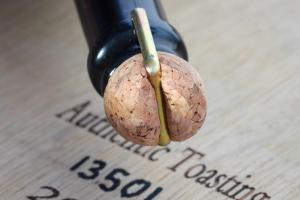
The comparison Gerber did submit us to, blind, was the difference between ageing on the lees on crown cap as opposed to on cork, the latter securely fastened by an agrafe, a first in South Africa. The difference is amazingly clear – and this was with exactly the same wine, the Prestige cuvée: on crown cap, the wine seems leaner, less evolved and much in need of dosage to pull it together. On cork, it is altogether more harmonious, detailed and delicious without dosage. Again it’s a textural difference.
I should point out that the first releases have been aged under crown cap, but after six months on the cork and with the addition of a little dosage (sugar levels are 7 g/l and 5 g/l in the Brut and Rosé respectively – le goût sud africain?) they are well harmonised and certainly fulfil my taste for freshness and subtlety, as well as being refreshingly really brut.
A mix of le goût anglais and le goût sud africain?
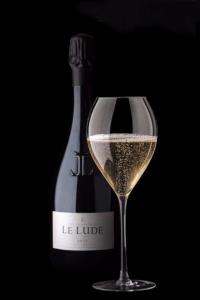
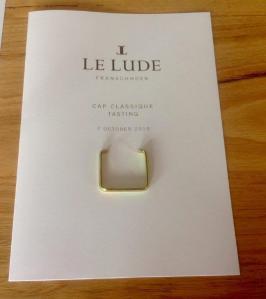
Lanson Black Lable NV is a favourite of mine, I like the crisper Champagnes, and Lanson is because they don’t do malo.
On the Gerber, as I read it, thy poured a wine still on the lees with 6 months age, intended to be aged for another 5 years before disgorgement and there were significant differences between the crown cap and cork closed wines.
This presumably is because of oxygen ingress via the cork, so what will another 5 years of this ingress do to the wine? Premox?
Or, if cork gives the effect of long aging so quickly, why wait 5 years?
Hi Peter,
The first Prestige example was the base wine from this year
The pair poured later, one under crown cap, the other under cork, were from the first vintage, 2012.
Apologies it wasn’t so clear, I hope it is now.